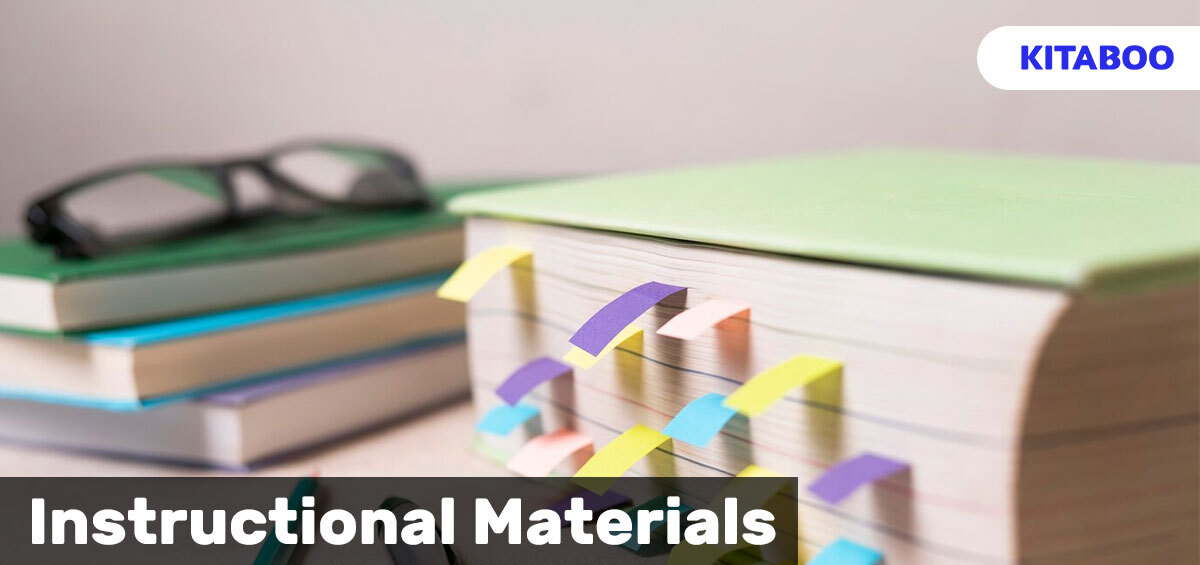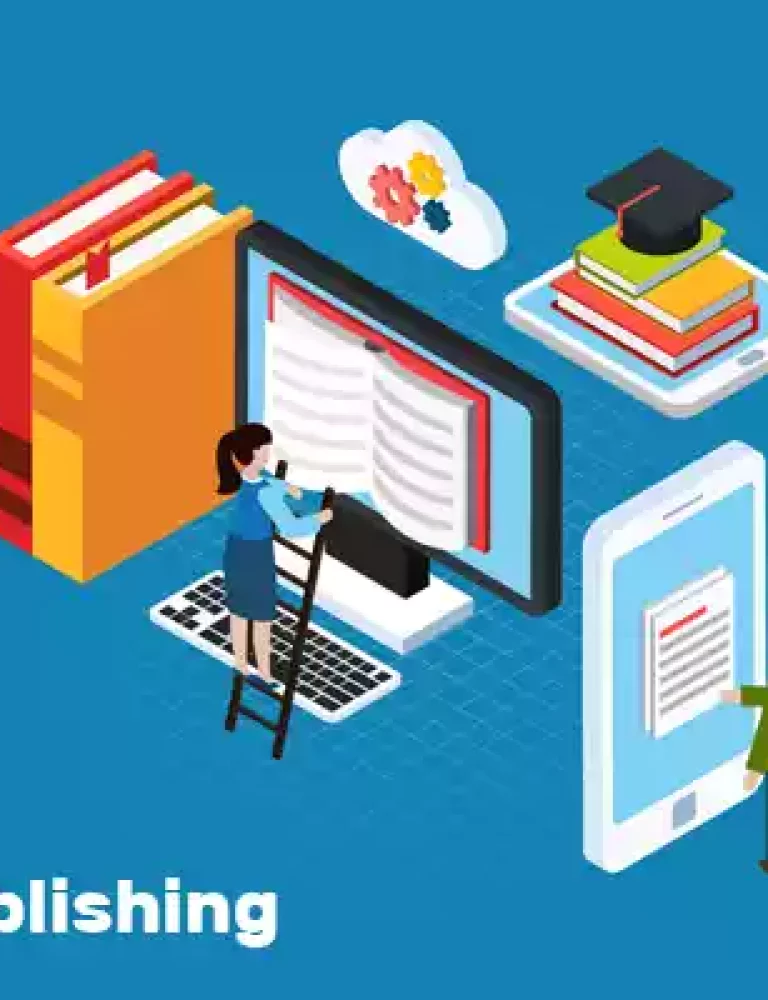The evolution of instructional materials has been a pivotal element in the transformation of educational methodologies. Far from being a mere contemporary trend, the use of various tools like charts, study guides, and textbooks has a rich history in education.
With pedagogy being revolutionized, advanced multimedia tools are effectively forming a part of instructional materials. They not only enhance the learning experience by offering interactive and dynamic content but also cater to various learning styles, making education more inclusive.
In this regard, digital platforms like KITABOO are at the forefront of this revolution, providing an array of digital instructional materials that redefine how educators teach and students learn.
In this article, we will learn more about the role of instructional materials in developing a holistic pedagogical design. Read on!
Table of Contents:
I. What are Instructional Materials?
II. The Different Types of Instructional Materials
III. Understanding Lesson Planning
IV. The Role of Instructional Materials in Successful Lesson Planning
- Improves Interaction with Content and Active Participation
- Caters to Diverse Learning Styles
- Offers Practical Applications and Boosts Problem-Solving Skills
- Increases Engagement through Gamified Learning
- Simplifies Complex and Abstract Concepts through Audiovisual Reinforcements
V. Questions to Ask While Selecting Instructional Materials for Successful Lesson Planning
VI. Implementing Instructional Materials for Successful Lesson Planning: The Way Forward
What are Instructional Materials?
Also known as teaching/learning materials (TLM), instructional materials are resources used in pedagogy to enhance the learning experience for students. They increase engagement and facilitate a comprehensive understanding of the subject matter.
These resources could be animate, inanimate, human or non-human. For example, an educator can use a documentary to visually explain the effects of soil pollution or an infographic to convey complex data. In the future, TLMs could include high-end augmented reality, too.
The Different Types of Instructional Materials
Below are five types of instructional materials that educators commonly use to enhance learning experiences and cater to diverse student needs:
- Print: These include anything from textbooks to study guides.
- Audio: Materials like cassettes, audio recordings, podcasts, audiobooks etc.
- Visual: Any visual aids like charts, infographics, diagrams, photographs, real-life objects, etc.
- Audiovisual: These include videos, documentaries, films, etc.
Electronic/Technological Interactive: Computers, laptops, calculators, apps, etc. fall under this category.
Understanding Lesson Planning
Defining what lesson planning is is crucial before we learn more about the role of instructional materials in lesson planning. In pedagogy, a lesson plan acts as a guide.
A lesson plan defines the learning trajectory of a topic depending on the learning objectives, the complexity of the subject matter, and student preferences. It covers learning activities, the learning sequence, and assessments as well.
The Role of Instructional Materials in Successful Lesson Planning
As lesson planning lays the foundational framework for the overall learning experience, instructional materials can act as catalysts to achieve the desired results in multiple ways.
Given below are key ways in which instructional materials play a vital role in successful lesson planning:
1. Improves Interaction with Content and Active Participation
Instructional materials engage multiple senses and support the curriculum. They also make learning fun and attractive.
Optimizing information delivery to learners in an organized, hands-on way can help create an interesting lesson plan. As a result, learners are invested in learning. Quizzes and other learning activities, when included in the lesson plan, can make the course content interactive and engaging.
2. Caters to Diverse Learning Styles
A lesson plan with instructional materials is more inclusive as it considers learners’ various visual and auditory needs. It also allows for asynchronous learning, where learners can go back to the TLMs for reference in the future when they go through the course content.
TLMs also allow for scaffolded learning that supports students at different levels. This makes a lesson plan flexible and adaptable, two of the most important characteristics that could drive success.
3. Offers Practical Applications and Boosts Problem-Solving Skills
A lesson plan that includes practical experiments to demonstrate theoretical concepts can lead to a connection between the course and real-world scenarios. For the simplest example, dropping a brick or a pen could practically explain gravity to the students.
As a result, a lesson plan with practical applications using TLMs also allows learners to sharpen other skills. A study concluded that using computer-generated instructional materials helps students adopt better problem-solving techniques and study habits.
4. Increases Engagement through Gamified Learning
Instructional materials can include gamified learning in a lesson plan, offering a range of benefits. According to the Smithsonian Science Education Center, gamified learning can lead to increased engagement in classrooms and aids in cognitive and physical development. Team quizzes, role-playing, creative projects, etc., can all be a part of gamified learning in the lesson plan.
5. Simplifies Complex and Abstract Concepts through Audiovisual Reinforcements
Well-designed instructional materials, especially audiovisual and visual, when included in a lesson plan, can help an educator understandably convey complex concepts.
An experiment found that learning is better through pictures and spoken words than pictures and written words. Visual aids can also prove helpful while trying to convey abstract concepts. Diagrams, charts, videos, etc., result in better comprehension, leading to better performance and success.
Questions to Ask While Selecting Instructional Materials for Successful Lesson Planning
Selecting the right TLMs is essential to get the desired results from the lesson plan. Here are a few questions you can ask and answer to maximum pedagogical results:
- What are the learning objectives of the lesson plan?
- What will the learners read, listen, or explore?
- Do the instructional materials align with the learning objectives?
- Will the learners genuinely benefit from the integration of certain TLMs?
- Do you need to acquire through licensing or create these materials for pedagogy?
Implementing Instructional Materials for Successful Lesson Planning: The Way Forward
A significant part of implementing instructional materials is evaluating them to ensure effective lesson planning. This brings in authenticity, credibility, and an objective third-party review.
A thorough assessment of TLM and ensuring they align with the curriculum is paramount. In this regard, collaborating with educational experts like KITABOO, who are deeply versed in the educational landscape, can help you overcome common challenges and optimize your lesson planning.
Connect with us to start a conversation.
Write to us at KITABOO@hurix.com for more details!
Suggested Reads:
Discover How An Ebook Conversion, Publishing & Distribution Platform Can Help You
Kitaboo is a cloud-based content platform to create-publish & securely distribute interactive mobile-ready ebooks.
You May Also Like
-
Online Book Publishing: A New Era For Authors Unleashed!
Blog,Digital Publishing,eBook solution / February 29, 2024







